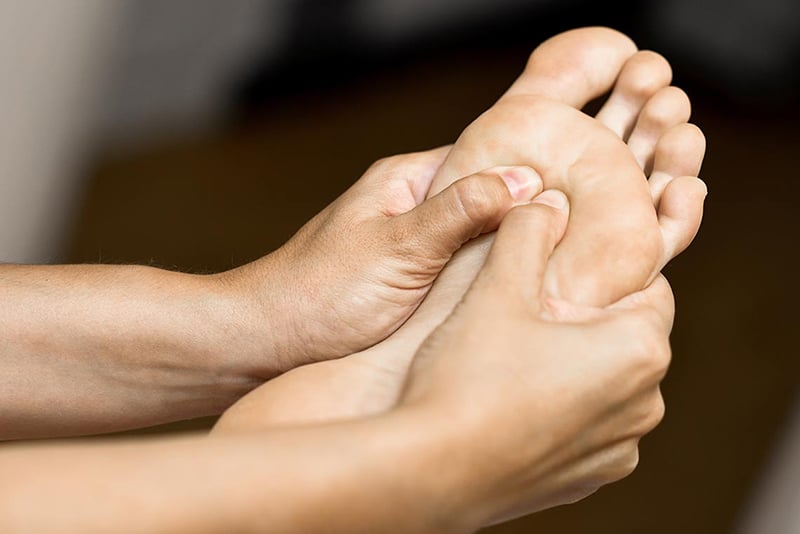
Morton's neuroma: what it is and what the symptoms are
Morton’s neuroma is a neuralgia localised in the front sole of the foot: it is a diffuse neuropathy (nerve pathology) due to inflammation and thickening of the interdigital nerve that innervates the toes
An inflammation of the digital sensory nerve
Morton’s syndrome or Morton’s neuroma is a neuralgic type of metatarsalgia due to a process of irritation/compression of probable mechanical origin which generally affects the 2nd or 3rd digital nerve of the foot and which may evolve to the formation of a small nodule between 3.5 and 12 millimetres in diameter.
The most common symptoms of Morton’s neuroma
Imagine that you are walking in the presence of a small subcutaneous nodule localised at plantar level.
This is no small discomfort that can be further aggravated not only by wearing tight shoes, but also by the physiological irritation of the nerve and the extremely painful sensation that follows.
The most frequent symptoms complained of by patients suffering from this syndrome are a burning twinge (similar to that resulting from contact with hot, very hot bodies) under the heads of the metatarsals, which often also radiates to the toes (2nd and 3rd toes or 3rd and 4th toes, depending on whether the 2nd or 3rd digital nerve is affected), with a sensation of
- numbness
- burning;
- tremor in the fingers themselves.
For all, the most common need is to slip off the shoe and massage the foot to get an immediate sensation of relief.
Diagnosis of Morton’s neuroma and surgery
The diagnosis combines an accurate anamnesis with a well-defined clinical course.
The most effective tests for confirming the diagnostic suspicion of this syndrome are:
- magnetic resonance imaging;
- dynamic ultrasound.
When the pathology found is at a very advanced stage, neurectomy, i.e. the surgical removal of the nerve with the neuromatous nodule, is necessary.
The post-operative period
Once the neuroma has been surgically removed and the wound has healed, there is a rehabilitation period that generally consists of
- toe mobilisation exercises to regain mobility and elasticity;
- stretching exercises for the achilles tendon;
- active and passive mobilisation exercises for the ankle.
The use of tecar therapy or lymphatic drainage massages may also be helpful in this recovery phase.
Read Also
Emergency Live Even More…Live: Download The New Free App Of Your Newspaper For IOS And Android
Foot Arthrosis: Symptoms, Causes And Treatment
Foot Deformities: Metatarsus Adductus Or Metatarsus Varus
Pain In The Sole Of The Foot: It Could Be Metatarsalgia
Orthopaedics: What Is Hammer Toe?
Hollow Foot: What It Is And How To Recognise It
Occupational (And Non-Occupational) Diseases: Shock Waves For The Treatment Of Plantar Fasciitis
Flat Feet In Children: How To Recognise Them And What To Do About It
Swollen Feet, A Trivial Symptom? No, And Here’s What Serious Diseases They May Be Associated With
Diabetic Foot: Symptoms, Treatment And Prevention



